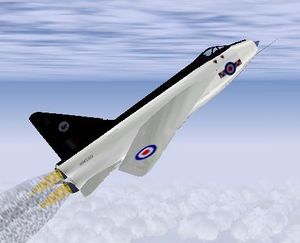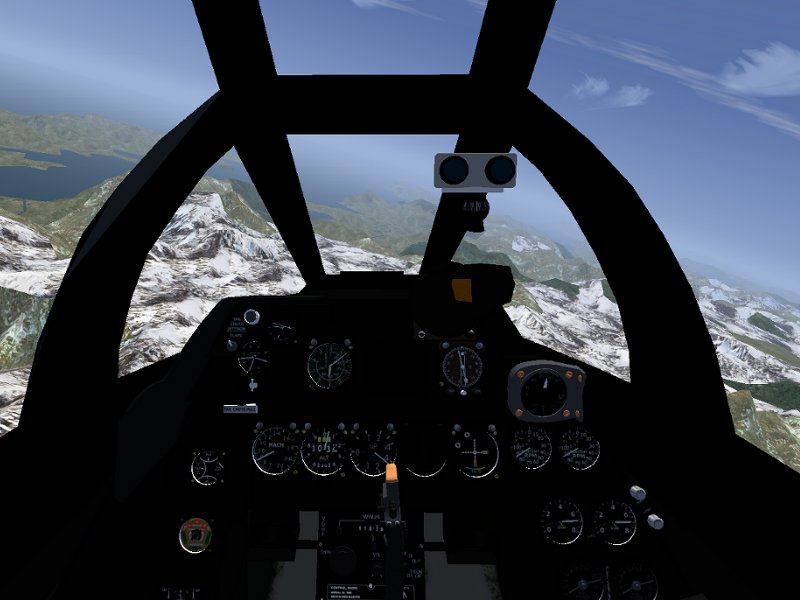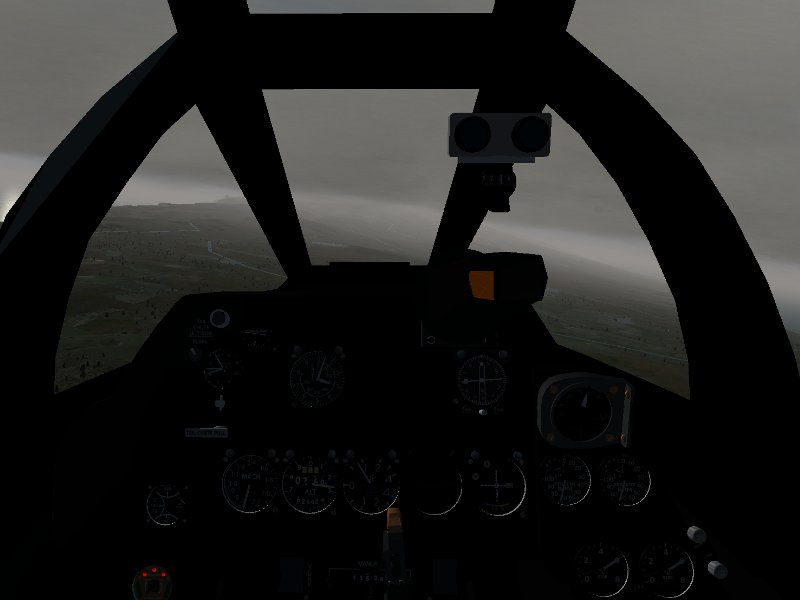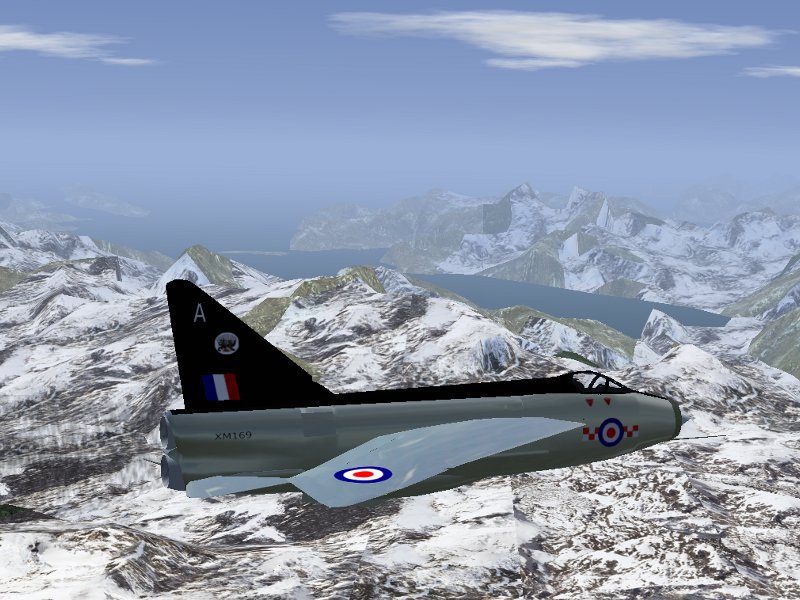English Electric Lightning
 | |
|---|---|
 | |
| Type | Interceptor aircraft, Fighter aircraft, Military aircraft, Historical aircraft |
| Configuration | Delta-wing aircraft |
| Propulsion | Jet aircraft |
| Manufacturer | English Electric, British Aircraft Corporation |
| Author(s) | AJ MacLeod |
| FDM | JSBSim |
| --aircraft= | lightning |
| Status | Early production |
| FDM |
|
| Systems |
|
| Cockpit |
|
| Model |
|
| Supports |
|
| Development | |
| Website |
|
| Repository |
|
| Download |
|
| License | GPLv2+ |
|
| |
The English Electric Lightning is a supersonic jet fighter aircraft of the Cold War era, remembered for its great speed and unpainted natural metal exterior finish. It is the only all-British Mach 2 fighter aircraft. Renowned for its capabilities as an interceptor, RAF pilots described it as "being saddled to a skyrocket". English Electric was later incorporated into the British Aircraft Corporation, later marks being developed and produced as the BAC Lightning.
Aircraft help
| Key | Function |
|---|---|
| d | Deploy braking chute |
| Ctrl+b | Toggle airbrakes |
| Ctrl+s | Toggle autothrottle |
| Ctrl+j | Jettison ventral tank |
| l | Select squadron markings |
| R | Radar close-up view (hold key down) |
| u/U | Adjust seat (requires DC power) |
Airplane of the Week/Month
The English Electric Lightning was reviewed as 'Airplane of the Week/Month' on June 27, 2011 as follows:
Model
The Lightning comes with a quite detailed 3d cockpit, about which I have somewhat mixed feelings. On the positive side, it exemplifies very nicely how important some wear and tear can be for the perception of realism in the cockpit, and under the right conditions (see below), the cockpit appears very genuine. Most of the cockpit switches are functional, and there is an engine startup procedure using external power modelled, in addition to a droptank, a braking chute for short runways and a differential braking system (very useful for taxiing...).
On the negative side, the black monochromatic surfaces of the plane's interior make for unrealistically stark contrasts, which in my view spoil the experience somewhat.
In addition, the mixture between ambient and diffuse light settings of the instruments seem somewhat odd and make for real problems in situations with reduced light - suddenly it becomes very difficult to read the instruments properly.
The exterior model of the Lightning comes with a nice, shiny reflection shader.
There is an animation of the engine smoke, but it looks a bit outdated compared with what is possible in Flightgear these days. All in all, the exterior model is nice, but not spectacular.
Flight characteristics
The FDM is clearly the strongest point of this aircraft. Just 5 minutes in the cockpit will give you a very clear idea about the concept of an interceptor. The Lightning has very strong engines and can climb like a rocket and also reach very high altitudes. I've managed to sustain flight at 52.000 ft and have reached 68.000 ft on a ballistic trajectory - which pretty much agrees with what I know of the published performance data.
The Lightning easily reaches supersonic speeds. According to what I know, it should be able to do Mach 2 in level flight at 36.000 ft (and I remember that this was doable in Flightgear 1.9.1), however I have not managed to reach more than Mach 1.6 in level flight and 1.7 in descending flight even after dropping the ventral tank with 1/3 fuel load in the tanks - this seems a bit odd to me.
The plane wants to be handled gently otherwise - at the typical velcoities of the Lightning, high g loads appear easily and lead to blackouts or redouts rather frequently, but the FDM is also one of the few I know which are capable of genuine nastiness - if you yank it around too hard (especially with negative g loads), then it can enter a tumbling motion with rapid loss of alititude which is rather difficult to recover from.
Flying the Lightning is fun - although a short-lived fun: The powerful engines suck the rather small tanks dry in no time, so if you want to go anywhere in a hurry, prepare for frequent aerial refueling. Luckily, the Lightning is one of the easiest planes I know to refuel from a tanker aircraft: It has a powerful engine, efficient speedbrakes, good trim and finds a new equilibrium velocity after changing the throttle setting quite easily - all of which means that it's fairly easy to control the airspeed precisely, and this is the most important issue for air-air refueling.
My personal wishlist
My first priority would be to investigate the FDM why Mach 2 remains out of reach. Next down the line would be some work on the cockpit - natural-looking material textures for the interior, and some tweaks of the ambient/diffuse settings to make the instruments work also beneath a cloud layer. Finally, adding a working set of weapons would be nice to fly actual intercept exercises on AI planes.
Things to experience
Despite being a supersonic interceptor that handles like a brick at low airspeeds, the Lightning can operate from surprisingly small airstrips. That's made possible by the high-powered engines which accelerate the plane quickly, and by the drag chute.
A nice thing to try (although clearly not by the book) is to approach the airstrip in a fairly flat trajectory and then apply the drag chute just before reaching the airstrip while the plane is still in the air. If timed correctly, the plane touches down as it should and decelerates almost immediately - the effect is almost as spectacular as catching a wire on a carrier.
| |||||||||||||||||
| |||||


